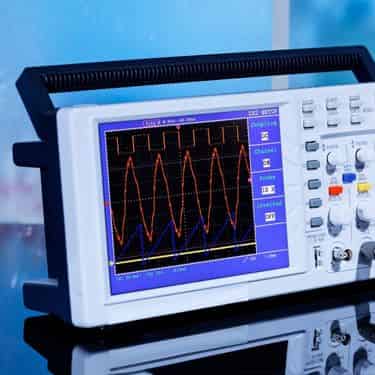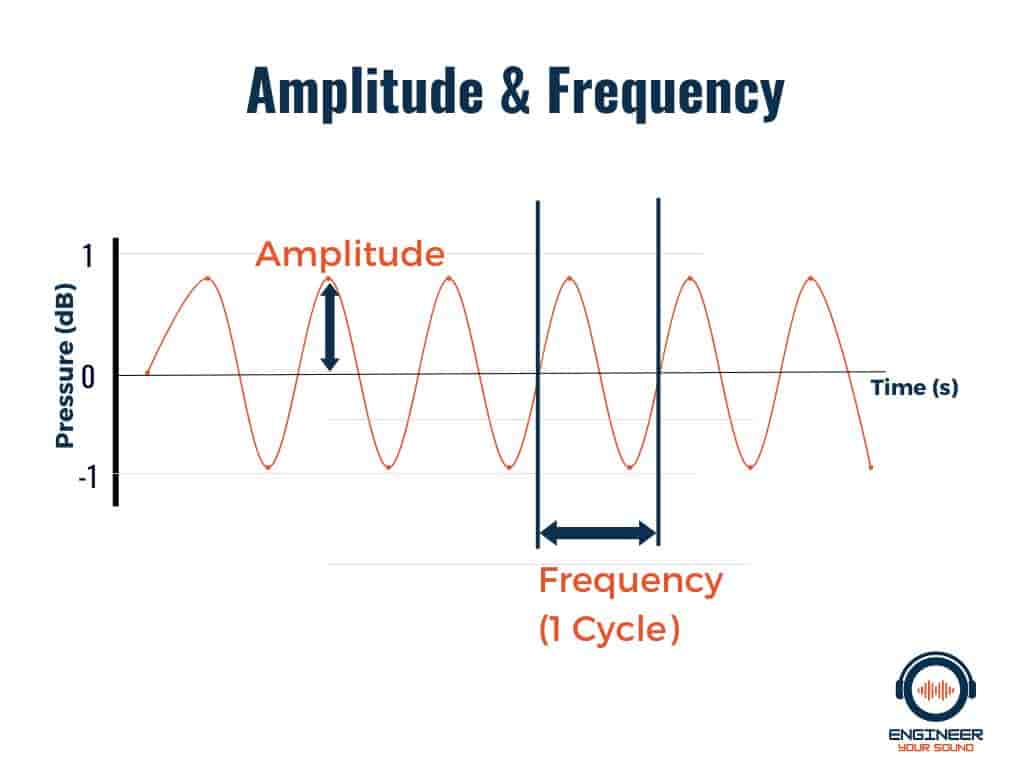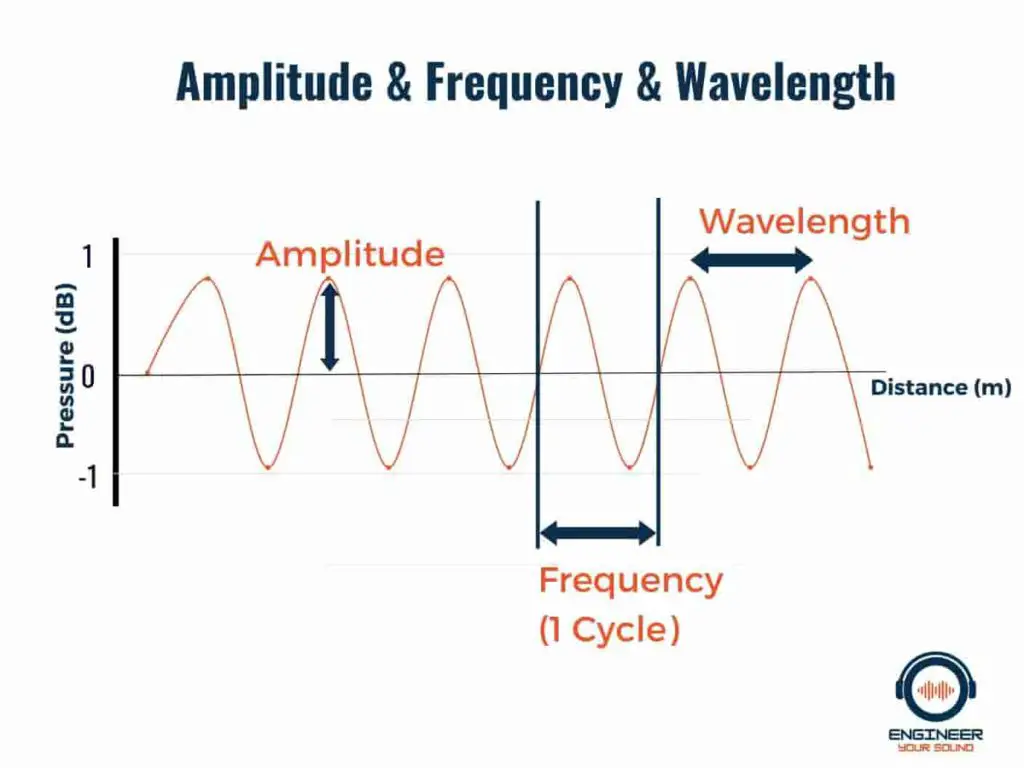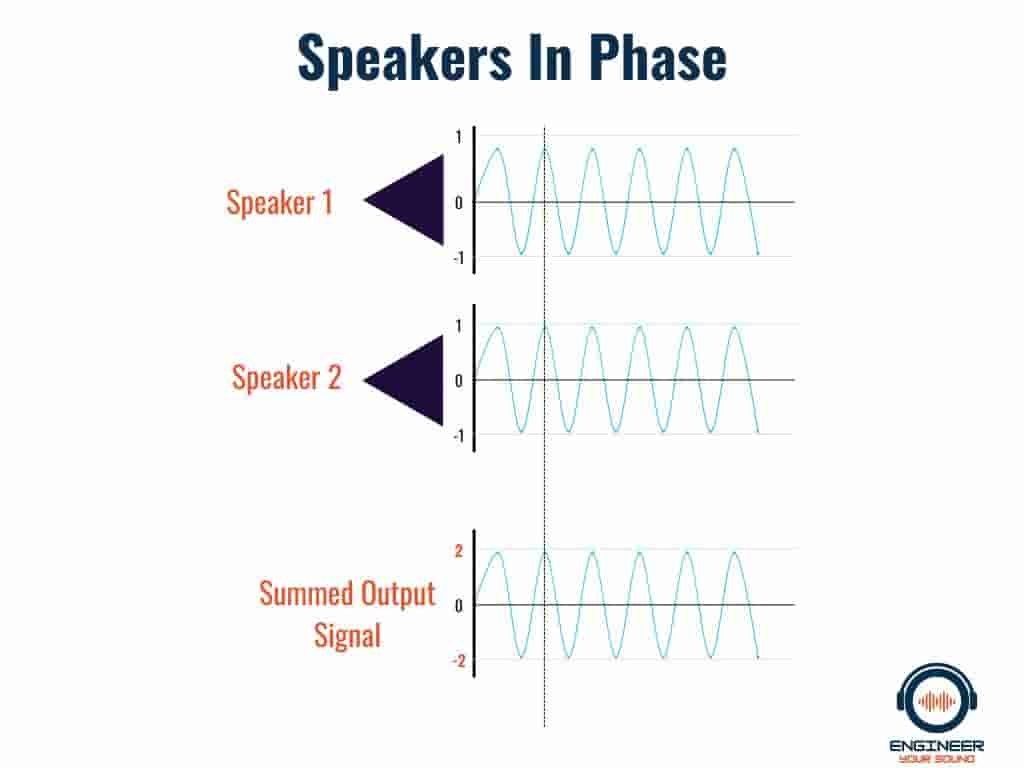Sound travels in waves. When you listen to music or any sound on your speakers, sound travels through air in waves from the sound source to your ears.
But what exactly are these sound waves? How do they work and why do they make the noises we hear?
Sound waves are invisible vibrations travelling through air or other materials. When something vibrates, such as a speaker cone, the air molecules in the surrounding area vibrate too. This vibration spreads through the neighbouring air molecules, spreading out like a wave.
Due to the nature of sound, it travels in waves.
We can visualise the sound waveforms on an oscilloscope to see their shape and frequency.
Sound waves have amplitude, frequency and wavelength components that vary depending on how loud the noise is and how long it lasts.
In this article, we’ll explore sound waves in simple terms to help you better understand how sound works, covering:
- What are sound waves in simple terms?
- How do sound waves work in a speaker?
- What are the different parts of a sound wave?

What Are Sound Waves In Simple Terms?
Sound waves are a form of energy created by the vibration of an object. They travel through the air, water and other materials in a wavelike pattern, carrying with them sound energy.
When these waves reach our ears, we hear a sound as we convert them into electrical signals that our brains interpret.
How Is Sound Created?
Imagine a speaker, as per the image below. As the speaker cone moves back and forth, it creates positive and negative air pressure in front of the speaker cone. This cone motion causes the air molecules in contact with the cone to vibrate.

The neighbouring molecules will also vibrate and so on until sound is travelling through the air.
The sound wave comprises different parts, including frequency, wavelength, amplitude, and phase.
Do Sound Waves Go On Forever?
Sound waves do not go on forever. They travel through a medium such as air, water, metal and other materials until the energy dissipates.
This means that sound waves are eventually absorbed by their surroundings, converted into heat energy and lost.
Imagine dropping a stone into a still river. At the point where the stone hit the water, waves ripple out until the energy from the impact fades. The further away from the point of impact, the smaller the waves.
If you imagine the point where the stone hits the water as your sound source and the water as air, you can begin to visualise how sound moves through the air.
Eventually, the waves will not have enough energy to travel and will dissipate.
How Do Sound Waves Work In A Speaker?
A speaker creates sound waves by vibrating the speaker’s diaphragm or cone, causing it to move back and forth.
This movement of the speaker cone produces sound in varying amplitude and frequency, depending on the characteristics of the original signal.
As the speaker cone moves, it will move the surrounding air molecules in contact with the speaker cone. It will convert the movement of air that accompanies this cone vibration into sound waves that travel through the room and we hear as sound.
Through its ability to reproduce different frequencies or pitches, a speaker can produce a wide range of sounds.
What Are The Different Parts Of A Sound Wave?
The different parts of a sound wave include: amplitude, frequency, wavelength, and phase.
The following image shows the amplitude and frequency of a sound wave.

By changing the x-axis from Time (s) to Distance (m) we can show wavelength:

What Is Sound Wave Amplitude?
Amplitude is the intensity (loudness) or pressure of the sound wave; it determines how far the diaphragm or cone in a speaker will move.
The greater the amplitude, the louder the sound.
The peak of a wave is the highest point of its intensity, and it will create more pressure on a speaker’s diaphragm than any other part of the wave. Because of this, peaks can regulate volume.
What Is Sound Wave Frequency?
Frequency is how many sound waves (or cycles) occur per second. Or phrased another way, frequency is the number of times a wave vibrates in a certain time frame.
We measure frequency in Hertz (Hz) and one Hertz is equal to one cycle per second.
Higher-frequency sound waves will have shorter wavelengths, which means they will carry a high-pitched sound that travels faster than lower frequencies.
What Is Wavelength?
Wavelength refers to the distance between two successive peaks or valleys in a sound wave; it determines how low or high-pitched we hear that sound.
We hear longer wavelengths as lower-pitched sounds, while we hear shorter wavelengths as higher-pitched sounds.
Wavelength is calculated by multiplying the speed of sound (344 m/s) by the frequency of the sound wave (in Hz). This gives you the length in meters that it takes for one complete cycle to occur.
What Is Phase In A Sound Wave?
Phase determines how two sound waves will interact and be heard by the listener.
If two sound waves have the same frequency, we say they are “in phase”, meaning their crests and troughs match up perfectly. These two waves will sum to create a new sound wave.
In the following image, we have two waves which are in phase. The summed output signal is formed as a result of these two sound waves interacting.

Out of phase means that two sound waves have different timing for their crests and troughs. This can happen when two sounds have different frequencies, or even when the same sound is produced from two different sources.
When this happens, the interference patterns created by the interaction between the two sound waves are drastically different from what we would hear if they were in phase.
In the following image, the two sound waves are 180 degrees out of phase. This results in silence as both sound waves sum to cancel each other.

To learn more about speaker phase, I have covered this in greater detail in this article, “What Is Speaker Phase?”
Final Thoughts
In conclusion, sound waves are vibrations in the air that we hear as different pitches and intensities.
The amplitude of a sound wave determines how loud a wave is while frequency determines pitch or how high/low it sounds.
Wavelength describes the distance between two successive peaks of a sound wave.
Understanding these components of sound waves can help you understand more about the way sound works and create better audio experiences for your listeners.
With this knowledge, you’ll be able to craft unique sounds with clear distinction from one another so they don’t cancel each other out when combined.
Happy listening!
